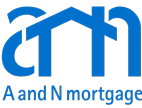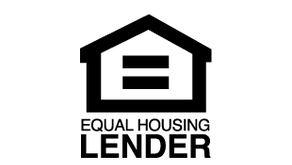As you consider applying for a mortgage, it can be equally comforting and daunting to know that there are so many options available as you look to finance the purchase of your home.
Conventional loans, sought by over 60% of all mortgage applicants, are what typically come to mind when you mention a mortgage. Conventional mortgage loans, also called conforming loans, are granted by private lenders who adhere to standards set by the federal programs of Fannie Mae and Freddie Mac. FHA loans, insured by the Federal Housing Administration, offer a commonly sought-after alternative to conventional loans. Here we discuss what it takes to qualify for each type of loan, as well as the benefits and pitfalls of each so that you can see which type of home loan might best suit your needs.
What Is A Conventional Loan?
- A conventional loan is used to finance the purchase of either your primary residence, secondary residence, or a rental property.
- Requires a 3% minimum down payment, can be as high as 10-20%, depending on what your lender requires.
- Fixed interest rate or adjustable-rate (ARMs) terms.
- Various term lengths, ranging from 10-30 years.
What Are Conventional Loan Requirements?
Conventional loan requirements are pretty stringent—especially when compared to government-backed mortgages. Private lenders want to make sure that you can afford the property that you are buying and that you will repay the loan. To assess your credit risk, they’ll make sure that you meet these minimums:
Credit Score: Most conventional loans require a minimum score of 620-640 but are better suited for applicants with credit scores above 680. The better your credit score, the better your interest rates, terms, and overall costs will be as you are considered a lower credit risk.
For those below this threshold, other loan options may have less favorable terms to account for the increased credit risk. If a conventional loan is in your future, pay attention to your score.
Debt-to-income (DTI) ratio: This measures your monthly debt obligations against your income. Lenders like to see numbers around 36% (the lower, the better your chances of approval), but maybe willing to consider you with a higher DTI depending on the circumstances. A high down payment (over 20%), an excellent credit score (700+), unusually large cash reserves, very high income, or stable, long-term job position (5 years or more at the same job) can all influence what DTI ratio your lender will allow.
Down Payment: Your down payment can vary widely, but expect to put down anywhere from 5-20% of your mortgage value down. The Conventional 97 program, for example, lets you put down as little as 3%, but some lenders require 10-20% or more for larger loans.
Income and Asset Documentation: Your lender will thoroughly verify your income and assets. Prepare to hand over the following when you apply for a conventional loan:
- 60 days of bank statements
- 30 days of pay stubs
- Two years of tax returns if you’re self-employed, own rental properties or receive non-salary income (like retirement or a pension)
- Two years of W2s
- Proof of social security, retirement or pension awards and two years of 1099’s
- Rental agreements for any investment properties that you own
Property Requirements: This year, the conventional loan limit is $510,400 for a single-family home. Higher-cost areas, like Seattle, Washington or Los Angeles, California, are eligible for larger maximum loans. For 2020, Fannie Mae and Freddie Mac have set conventional loan limits for Seattle at $592,250 and LA at $636,150. If you’re planning to finance multi-unit properties, those limits increase to accommodate the cost of additional units.
Conventional loans apply to many types of properties, including single-family homes, Planned Unit Developments (detached homes within a homeowner’s association), condos, multi-unit dwellings, co-op properties, and on occasion, manufactured homes.
You can also use conventional loans to finance the purchase of a second home or a rental property. In those cases, interest-rates and down payments are usually higher since the property is not your primary dwelling and, as such, is deemed higher risk by lenders.
What’s The Difference Between An FHA And A Conventional Loan?
FHA loans are home loans insured by the Federal Housing Agency. FHA loans have different qualifications and offer various benefits and drawbacks when compared to a conventional loan. These programs put homeownership within the grasp of many, employing less stringent qualification requirements. Depending on your circumstances, you might decide to choose one over the other.
There are a few fundamental differences between FHA and conventional loans.
- Interest rates: Comparable to or lower than conventional loan rates.
- Lower acceptable credit score: FHA loans are available to those with credit scores as low as 580. Even buyers with credit scores as low as 500 can obtain an FHA loan with a 10% or higher down payment. Conventional mortgages require a credit score of at least 620, and the lower the score, the higher the interest rate.
- Higher acceptable debt-to-income ratio: DTI for an FHA loan should be 50% or less, with approval more likely below 43%. This allowance is slightly more generous than the 36% DTI that lenders like to see for conventional home applicants.
- Employment History: Must be currently employed with a two-year income history.
- Down Payment: FHA loans can be established with as little as a 3.5% down payment.
- Duration: 15 or 30 years
- Loan Limits: This year, the FHA loan limit is $331,760 in low-cost areas (significantly lower than the conventional loan limit) and $765,600 in more expensive markets. These limits vary by county.
- Property restrictions: FHA loans are only for your primary residence. You must live in the home. You cannot purchase a second home or investment property or homes sold within 90 days of the previous sale using an FHA loan. FHA property appraisals are more stringent than conventional loan property appraisals. The property must be satisfactorily appraised for value, safety, construction, and compliance with local codes before you can take out an FHA loan.
- FHA streamline refinance: Once you have an FHA mortgage that is in good standing and at least six months old, you can easily refinance your loan with potentially more preferable terms.
- FHA Lenders: FHA-approved lenders are held to pretty high standards thanks to government involvement. Consequently, closing costs are generally limited to make homeownership more accessible.
- FHA loans are assumable. If a buyer qualifies for the existing terms of an FHA mortgage, they can assume the loan and continue paying the existing loan and its original interest rate.
Private Mortgage Insurance
One of the most significant differences between the costs of conventional and FHA loans is private mortgage insurance (PMI). PMI protects the lender in case of default and features prominently in the costs associated with each mortgage.
A conventional loan:
- Does not require PMI if you put at least a 20% down payment.
- If you put down less than 20% down, once your loan-to-value ratio reaches 78%, your PMI automatically cancels.
- Your PMI premium is correlated to your credit risk and the amount of your down payment. Lower premiums are for buyers with better credit.
FHA Loan:
- Private mortgage insurance is required for the life of the loan.
- The upfront mortgage insurance premium of 1.75% of your base loan amount is due either in cash or financed into it. After that, FHA loans are subject to annual mortgage insurance premiums.
- The PMI on FHA loans is generally higher than for conventional loans.
- You can only eliminate the PMI by refinancing to a conventional loan, or after 11 years if you put more than 10% down.
Which Mortgage Is Right For You?
Over 60% of mortgage applicants seek a conventional loan, and the FHA loan is the second most widely secured home loan product. Based on the differences outlined above, they each have their merits. While a big part of the decision lies in what you can qualify for based on your current financial circumstances, there are cases where the best choice may not be so cut-and-dry.
First, you should consider the property type. You can’t use FHA loans for vacation homes, rental/investment properties, or for homes that don’t pass stringent safety and value appraisals. Beyond that, consider your credit risk. Evaluate the options that provide you with the best bottom line. If you are well-qualified, with a 720 or higher credit score, a conventional loan may cost less per month even though FHA loans may have lower interest rates, thanks to the required PMI coverage. For both FHA and conventional loans, compare lenders carefully. Consider the terms and conditions of your offers and do not hesitate to shop around to find the best deal.
A Qualified Mortgage Banker Or Mortgage Broker Can Help You Decide
For additional guidance, feel free to enlist the help of a qualified mortgage banker or mortgage broker. They can help you weigh your options and determine the best loan for you and your family. If you have any questions about the conventional loan or FHA home loan process, please reach out to A and N Mortgage – we’re happy to help.
A and N Mortgage Services Inc, a mortgage banker in Chicago, IL provides you with high-quality home loan programs, including FHA home loans, tailored to fit your unique situation with some of the most competitive rates in the nation. Whether you are a first-time homebuyer, relocating to a new job, or buying an investment property, our expert team will help you use your new mortgage as a smart financial tool.









